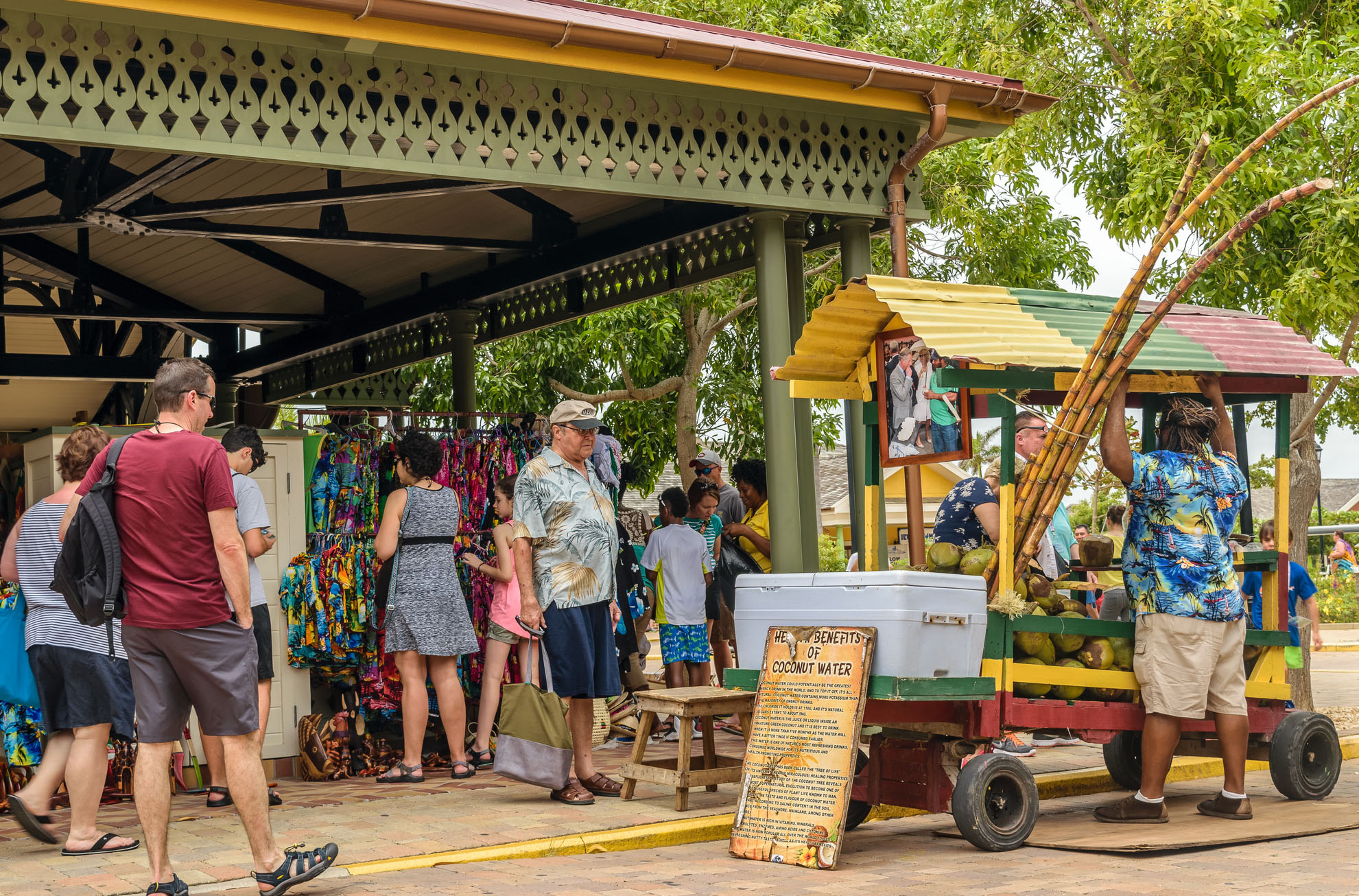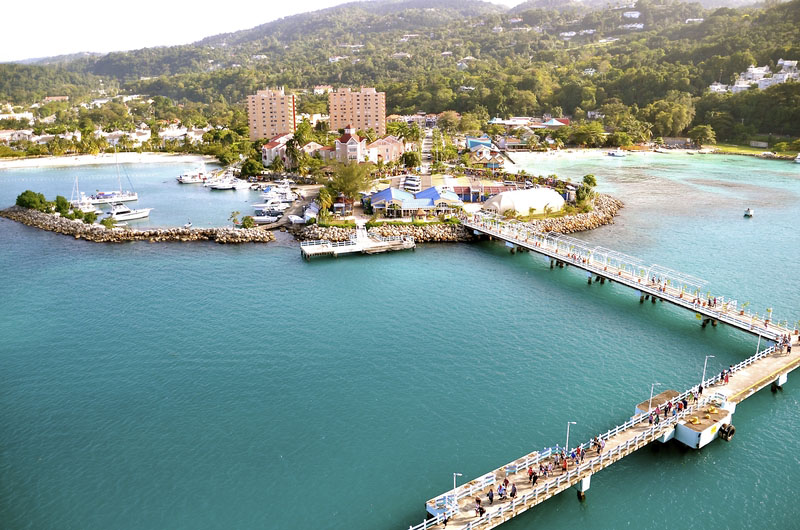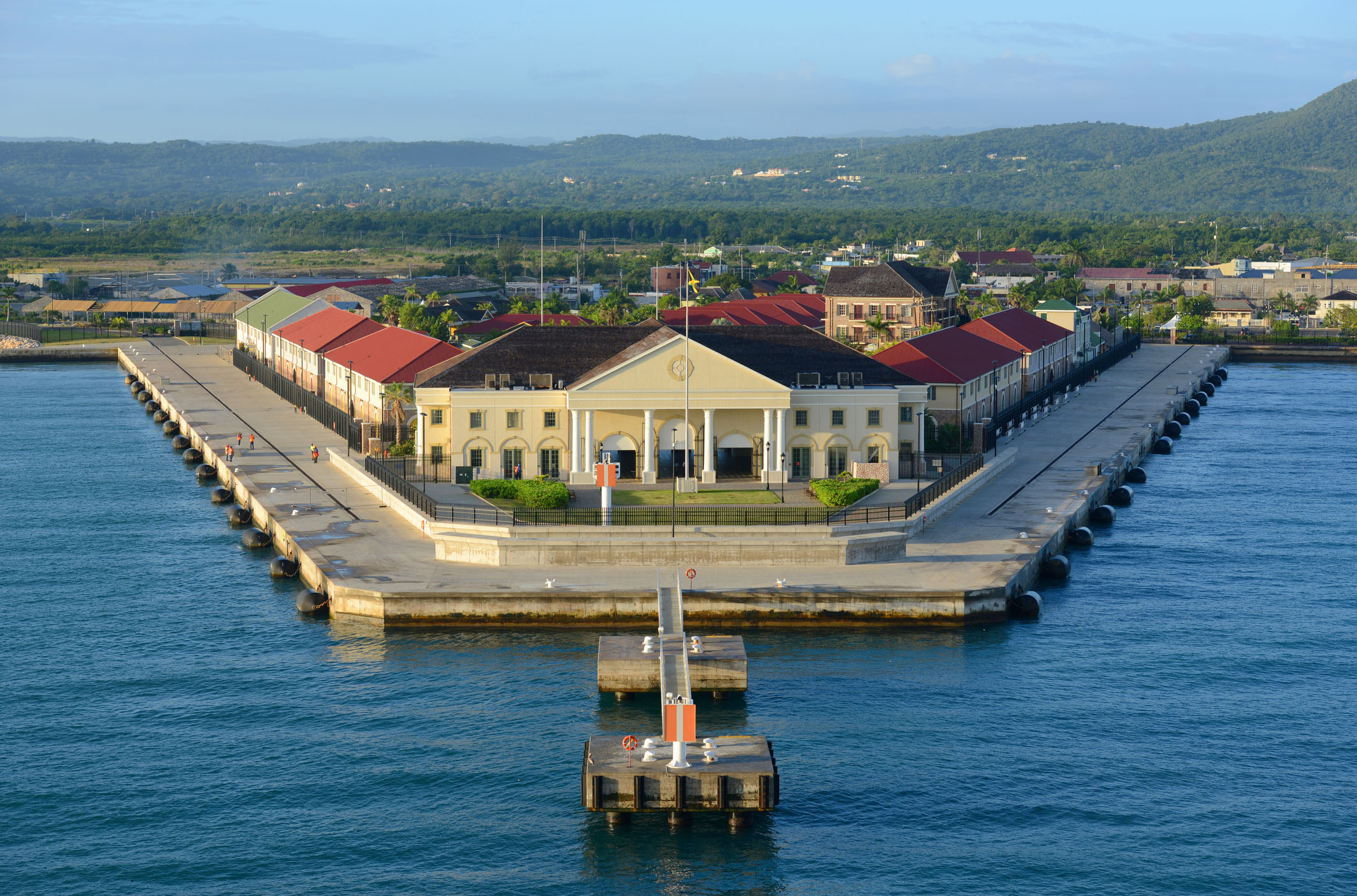Cruise Jamaica … a push to increase market share
By Mike Jarrett
2017, November 1: Jamaica is seeing exciting growth in cruise business and is expecting to receive a record number of cruise passengers during the current year, 2017 – 2018. This expectation flows from an analysis of visitor arrival statistics for the first seven months which revealed a significant 4.9% increase over the corresponding period last year.
From January 1 to the end of July 2017, Jamaica received 1,088,718 cruise passengers.
“That growth trajectory is expected to continue, especially as Jamaica evolves into a leading cruise destination in the Caribbean with the support of its newly launched Cruise Jamaica initiative,” said a source at the Jamaica Tourist Board.

Jamaica has seen tremendous growth in all aspects of its tourism sector. Indeed, Jamaica is where modern Caribbean tourism began. This is a claim that few, if any, would care to challenge. And, just as well. It could be an exercise in futility.
When did it begin?
To the claim that Jamaica is ‘ground zero’ for Caribbean tourism, Jamaicans would perhaps begin by mentioning the year 1948. That was when Abe Issa, regarded as ‘the father of Jamaican tourism’, opened the country’s first luxury resort, Tower Isle Hotel, near Ocho Rios. Tower Isle immediately created a buzz, attracting the attention of the rich and famous on both sides of the Atlantic. Royalty and rulers; movie stars and writers; sport personalities, players and the obscenely rich . . . everybody who was somebody . . . would be photographed basking in the newspapers on the brilliant white sand beaches of Jamaica’s north coast.
Other recollections may go further back, ten years earlier perhaps, when notables, the likes of: Sir Winston Churchill; great musicians like Louis ‘Satchmo’ Armstrong; and, some others that were difficult to categorise, like (Mr.) Walt Disney (himself), frequently flew into Kingston Harbour (even before there was an international airport) to enjoy the luxuries then offered at the now-long-demolished Myrtle Bank Hotel.
If one were to date the start of Jamaica’s tourism industry, January 27, 1891 and the official opening of the Jamaican Great Exhibition of 1891 is as good a date as any. As Merrick Needham told the Kiwanis in Kingston (on January 27, 2015), fourteen Caribbean territories, as well as Britain, Canada, the USA, Sweden, Norway, Belgium, Germany, Holland, Switzerland, Greece, France, Russia, India and Ceylon (now Sri Lanka) had exhibits in this enormous exhibition in Kingston.
The previous year, during the planning of this massive event, it was clear that the influx of overseas visitors would create problems of accommodation in Kingston. Indeed, there were already complaints about the (lack of) availability and the (poor) quality of visitor accommodation in the city. These concerns were immediately addressed with the passage of the Jamaica Hotel Law of 1890 which offered special incentives for hotels built in Kingston in time for tourists attending the Jamaican Great Exhibition of 1891.
During the past 126 years, Jamaica has built a tourism industry that has become a major pillar in the country’s national economy. Its land-based tourism has expanded several-fold, with major global brands providing accommodation services at every level of the industry. In seven years, from 1955 to 1962, Jamaica’s visitor arrivals increased from 86,000 tourists to 227,000. Tourist revenues (per visitor) increased 950% from £4 to £38. And, in a sea regarded as ‘the cruise capital of the world’; in which some of Earth’s most beautiful tropical isles are individually only able to offer one or two dedicated cruise berth/s with reception facilities, Jamaica has four cruise ports on its north coast – Montego Bay, Falmouth, Ocho Rios and Port Antonio, in addition to the cruise berth at Kingston.

One country, five destinations
Each of Jamaica’s cruise ports offers visually different and totally unique arrival experiences. Indeed, the visitor, if taken from one cruise port to another, would be pardoned for thinking they had travelled to another country.
The green, flat landscape of Montego Bay with its distant mountains and turquoise waters, looks nothing like the quaint, Georgian town of Falmouth, the newest of Jamaica’s cruise ports. Port Antonio, the ideal port for boutique cruise ships and luxury yachts, lies resplendent against the lush, mountainous backdrop of Jamaica’s highest range, the Blue Mountains. The tropical rainforest of Ocho Rios, verdant from the spray of a hundred waterfalls, presents a beauty of nature rarely experienced … anywhere; its Artisan Villages providing an exquisite shopping experience.
And Kingston, Jamaica’s capital city, the birthplace of Reggae and regarded as the cultural capital of the Caribbean (for its history, music, art, theatre and cuisine), is visually different but culturally interesting and unusual in many respects.
Collectively, from these five gateways, cruise passengers have access to more than 150 visitor attractions.

Robust plans
Jamaica has been in the tourism business for a long time. And successive governments have sought to implement robust tourism development plans to increase the number of visitor arrivals and the revenues generated by land-based and cruise tourism. With its new push to expand market share, the country has been exploring innovative ideas to enhance the visitor experience. In this regard, discussions regarding infrastructure improvement; new cruise terminal buildings; beautification projects; and, increasing available ground transportation have been continuous.
As Jamaica looks to increase its share of the Caribbean cruise market, recognizing the urgency of recent initiatives aimed at bringing Cuba back onto the itineraries of the major cruise lines, the Jamaican government is laying down plans for the future. Current plans include:
- improved destination assurance with a focus on security,
- safety and seamlessness of the arrival experience,
- increased training for employees,
- new port opportunities within Jamaica; and,
- expanded regional port itineraries through collaboration with other top Caribbean destinations such as Cuba and the Dominican Republic.
Several of the safety-focused initiatives are already underway. Jamaica is heavily investing in both existing programmes and new initiatives to ensure a safe, secure and enjoyable visitor experience. This includes a District Constables Training Programme and the establishment of Destination Assurance Councils.
The District Constables Training Programme was introduced in 2016 by the Jamaican government. It is delivered through two agencies: the Tourism Product Development Company (TPDCo) and the Tourism Enhancement Fund (TEF). The initiative provides an added layer of security in resort areas, to ensure strict enforcement of the rule of law.
The Destination Assurance Councils (DACs) initiative was launched in June 2017 in six resort areas. The DACs have been given the mandate to ensure that the quality, standards and integrity of Jamaica’s tourism product are maintained. They are required to identify the needs of the industry and monitor the progress of developmental initiatives in resort areas.
Cruise Jamaica initiative
The Cruise Jamaica initiative was designed to showcase the attributes of the destination; and, to present Jamaica as ‘the leading cruise destination’ to the industry, the market, the travel media and travel influencers (including travel agents). To this end, the Jamaica Tourist Board has been collaborating with the Port Authority of Jamaica in designing strategies for attracting more cruise ships and passengers to Jamaican cruise ports and for expanding home porting in Jamaica.
This marketing initiative, in targeting global cruise lines, tour and attractions operators, will include promotion of new development of infrastructure; improvement and upgrading at cruise ports; and, expanded outreach to cruise-specific media channels, so as to create new industry buzz about the Jamaican destinations.
Jamaica’s tourism infrastructure was not affected by the devastating hurricanes this past (2017) summer and, up to the time of writing, was intact and ready to receive cruise ships, as usual. []






